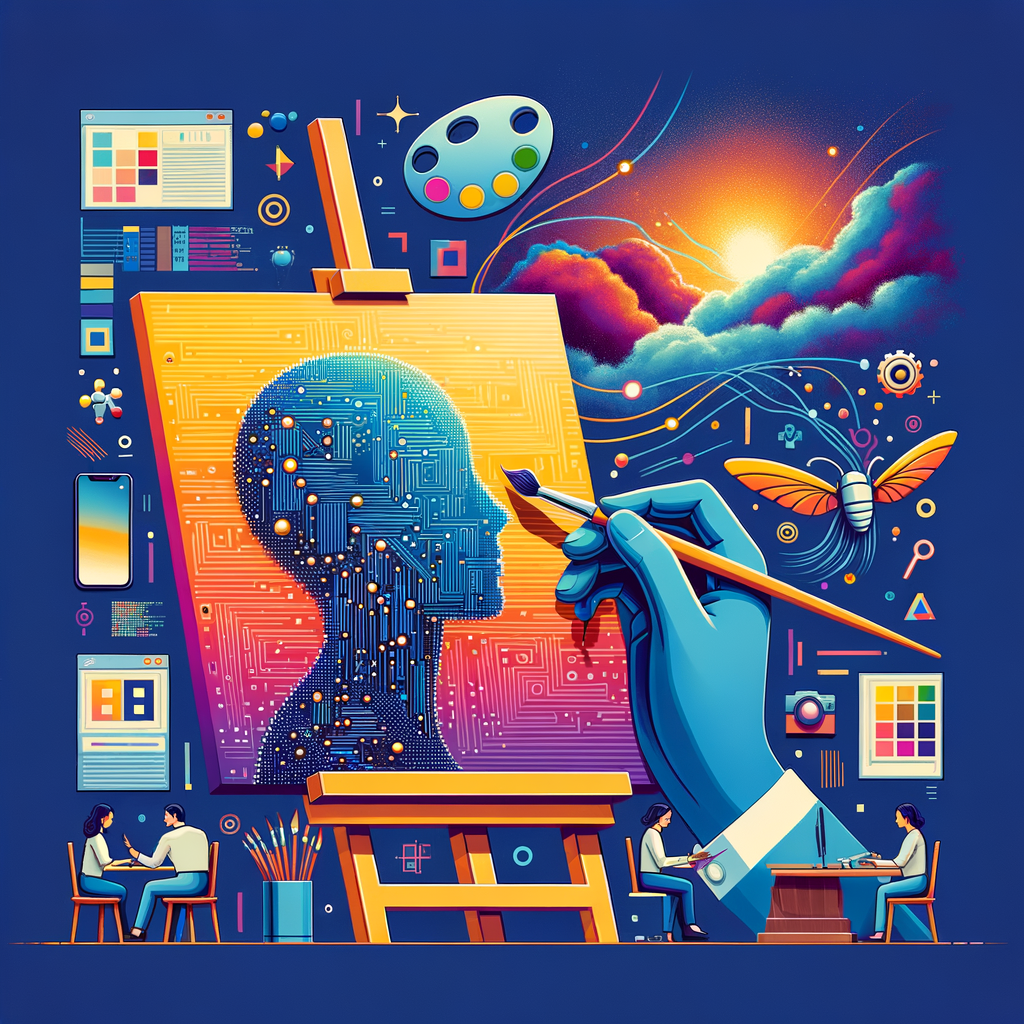
From Code to Canvas: Artificial Intelligence in Modern Art Creation
Explore the dynamic relationship between artificial intelligence and modern art. This blog delves into how AI is revolutionizing artistic expression, opening new avenues for creativity, and challenging traditional art paradigms. We discuss various AI-driven tools and techniques, such as generative adversarial networks and deep learning algorithms, that are empowering both established artists and newcomers to redefine art in the digital age.
Artificial intelligence (AI) has permeated nearly every aspect of our lives, from everyday conveniences to complex problem-solving in fields like healthcare and finance. However, one area where AI is continually making waves is in the realm of art. In this exploration, we delve into the relationship between AI and modern art—an unorthodox yet fascinating partnership that is reshaping the boundaries of creativity and artistic expression.
The Evolution of Art and Technology
Art has always evolved hand-in-hand with technology, from the invention of photography and the phonograph to digital art and video installations. Today, AI is the latest technological frontier pushing the boundaries of artistic creation. This intersection of art and AI raises questions about authenticity, creativity, and the role of the artist in the age of machines.
AI: The New Collaborator in Art
AI as a collaborator opens up new possibilities for creating art that would be impossible for humans alone. For instance, Generative Adversarial Networks (GANs) have emerged as one of the most exciting AI tools for artists. These networks can generate images, videos, and music that are completely novel yet reflective of the patterns and styles they have been trained on. This allows artists to experiment with new mediums and styles, pushing the conventional limits of their craft.
Generative Art: Beyond Human Imagination
Generative art, where AI autonomously creates artworks, challenges the traditional notion of art as a purely human endeavor. Artists provide the initial parameters, and the AI algorithm does the rest—often surprising its human counterparts with unexpected beauty and complexity.
Deep Learning and Artistic Styles
Deep learning, a subset of machine learning, has given rise to style transfer applications, which allow users to impose the stylistic features of one image onto another. This has profound implications for artists, who can now blend known artistic styles or create entirely new ones, transforming photography, painting, and video art.
Ethical and Philosophical Considerations
As AI becomes more prominent in art creation, it prompts a debate on the nature of creativity and authorship. If an AI program creates a painting, who is the artist— the machine, the programmer, or both? These questions are not merely academic; they impact how we perceive and value art in the 21st century.
Ownership and Licensing
Legal frameworks have yet to catch up with AI’s capabilities, raising issues around copyright and ownership. As AI continues to evolve, society needs to address who owns the end product of AI-generated art. Some argue for the programmer or the user of the AI, while others believe the works should belong to the public domain.
AI-Driven Tools and the Democratization of Art
With AI tools becoming more accessible, people without traditional artistic training are creating compelling art. Applications like DeepArt and RunwayML allow users to transform photos and videos with artistic filters or generate music and soundscapes, democratizing art creation and allowing more voices and visions to be heard.
Conclusion: The Future of AI in Art
AI’s growing role in art creation raises as many questions as it answers. While some see AI as a tool that enhances human creativity, others fear it could supplant human artists. However, the consensus among many in the art community is that AI offers unprecedented opportunities for creativity and expression, heralding a new era of artistic exploration.
Just as the camera did not replace painting, AI will not eliminate traditional art forms; instead, it provides a new palette of possibilities, extending the creative reach of artists around the globe.
In observing AI's progress in the world of art, one thing is clear: the canvas is only getting larger, and the colors more vibrant. AI is not just shaping the future of art; it is redefining the essence of what we call art itself.